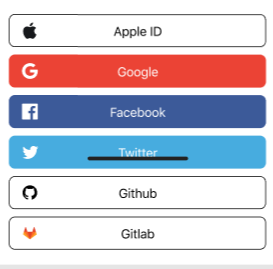johannes/rich-room-topics
erikj/sync_v2_state_after
include_device_keys
tulir/service-members
travis/msc/safety-allow-errors-on-unbind
main
old_master
matthew/msc4220
dbkr/threepid_submittoken_errors
toger5/expiring-events-keep-alive
matthew/msc4016
kegan/profile-changes
travis/msc/widgets-send-recv-toDevice
andybalaam/owner-state-events
toger5/matrixrtc-call-ringing
andybalaam/crypto-terminology
tulir/remove-legacy-mentions
travis/msc/deprecated-endpoints
tulir/appservice-to-device
anoa/copy_hints
element-hq/oidc-qr-login
hughns/matrixrtc-m-call
hughns/delegated-oidc-architecture
quenting/account-deeplink
quenting/as-device-management
toger5/matrixRTC
clokep/profile-tz
erikj/sss
travis/msc/mention-spam-suppress
travis/msc/translated-errors
kegan/ssext-receipts
toger5/future-widget-api
tulir/send-redact-backwards-compatibility
kegan/otk-reset
aggregation-cleanup
toger5/rtc-focus-well-known
travis/msc/request-max-body-size
kegan/fallback-keys
travis/msc/room-labeling-filtering
rei/msc/accdata_ases
travis/msc/social-sign-on-authed-media
hughns/device-signing-upload-uia
travis/msc/verified-accounts-part1
tulir/fix-reply-intentional-mentions
travis/msc/t2bot/bot-buttons
travis/msc/head-media-download
travis/msc/fix-x-matrix-auth
babolivier/m_locked
matthew/msc4136
travis/msc/remove-qs-auth
hughns/gha-update
travis/msc/voluntary-flagging
travis/reinstated-events
travis/msc/appservice-soft-failure
hughns/simple-rendezvous-capability
travis/msc/feature-versioning
matthew/msc4103
kegan/fix-threaded-read-receipts
travis/msc/media-integrity
travis/msc/signing-key-purpose
travis/msc/media-redirect-auth-cdn
toger5/localTimestamp-server-sync
toger5/encrypted-event-indexing
kegan/complement-msc
justjanne/3981-relations-recursion
matthew/msc3018
travis/msc/delivery-receipts
giomfo/push_encrypted_events
kegan/msc3884
stefan/pusher-creation
travis/msc/2244-ext-uia
matthew/msc4083
gsouquet/unsigned-thread-id
andybalaam/event-thread-and-order
hs/proposal-admin-contact-1
matthew/msc4076
kegan/sync-v3
rav/proposal/dead_device_key_claims
giomfo/tweak_email_notification
travis/msc/inhibit-profile
travis/msc/rules-prompt
travis/msc/mutable-events
travis/msc/additive-events
travis/msc/rbac-pl
clokep/mentions-mixin
travis/msc/room-id-is-create-event
travis/msc/send-as-server-or-room
travis/msc/room-send-key
travis/msc/make-send-pdu
hughns/sso-redirect-action
travis/msc/drop-ips
travis/msc/strict-user-id-grammar
travis/msc/iana/service_name
andybalaam/thread-root-is-not-in-thread
andybalaam/deleting-state
hs/shared-rooms
babolivier/relation_redaction
weeman1337/voice-broadcast
travis/msc/polls-notifs
alfogrillo/poll_history_cache
travis/msc/room-model-config
kegan/pseudo-ids
bwindels/relation-redactions
clokep/thumbnail-media-negotiation
dbkr/voip-completed-elsewhere
madlittlemods/gappy-timelines
dbkr/2746-fix-typos
dbkr/msc2746
hughns/login-token-requests
clokep/encrypted-mentions-only-rooms
travis/msc/enc-as/otk-query
travis/msc/inline-widgets
travis/msc/voice-messages
travis/msc/extev/translatable
travis/msc/extev/video
travis/msc/extev/images
travis/msc/extev/files
travis/msc/extev/audio
travis/msc/extev/encryption
travis/msc/extev/notices
travis/msc/extev/emotes
madlittlemods/forwards-fill
hughns/device-scope-txnid
madlittlemods/join-timestamp-massaging
madlittlemods/timestamp-to-event-causality-parameter
matthew/msc2716
madlittlemods/createroom-timestamp-massaging
madlittlemods/power-level-up
kerry/display-notification-reason
travis/msc/linearized-matrix
hughns/sign-in-with-qr
kegan/ssext-account-data
kegan/ssext-typing
andybalaam/dynamic-predecessor
travis/msc/enc-as/key-query
travis/msc/otk-dl-appservice
hs/as-txn-limit
hughns/x25519-secure-channel
travis/msc/ietf-mimi-framework
hs/reporting-fixes
hughns/sign-in-with-qr-v2
kerry/remote-local-notification-toggle
madlittlemods/dynamic-predecessor
johannes/event-match-dotted-keys
dbkr/msc2747
clokep/room-tag-notifications
matthew/msc1767
matthew/msc3277
kegan/msc3885
SimonBrandner/msc/sfu
matthew/group-voip
kerry/remote-push-toggle
kerry/user-agent-on-device
travis/msc/extev/push-rules
travis/msc/extev-rel/push-rule-feature-condition
travis/msc/extev-rel/bulk-push-rule-change-endpoint
travis/msc/extev/rver-cond
travis/msc/audio-waveform
SimonBrandner/msc/call-notif
hs/appservice-no-notifs
travis/msc/del-srv
travis/msc/ietf-mimi-transport
travis/msc/ietf-mimi-message-format
fayed/cryptographic-membership
eric/msc-jump-to-date
rav/proposal/linking_media_to_events
matthew/owner-pl
madlittlemods/appservice-interested-in-local-users
justjanne/messages-endpoint-threads-filter
rav/propsal/content_tokens_for_media
matthew/msc1763
rav/proposal/faster_joins
fayed/tofu
babolivier/m_not_approved
rei/unable_partial_state_room
travis/msc/custom-stickers
babolivier/user_status
johannes/event-match-almost-anything
babolivier/msc_presence_busy
travis/msc/welcome-message
anoa/blurhash
hs/errcode-specific-failure
anoa/custom_room_presets
travis/msc/federated-reports
aggregations-references
travis/extev/power-levels
johannes/cascading-profile-tags
richvdh-patch-1
travis/clarify-msc/aggregations-on-sync
clokep/threads-push-rule
andybalaam/owned-state
travis/msc/v10
matthew/location-streaming
stefan/ephemeral-location-streaming
andybalaam/location-streaming-wip
rav/pr_templates
rav/readme
hawkowl/backfill-state
kerry/time-based-push-filtering
johannes/notify-in-app
erikj/deprecate_sender_key
babolivier/unread_counts
travis/msc/state-change-acls
andybalaam/state-sub-keys
hs/deactivated-user-metadata
gsouquet/threading-via-relations
neilalexander/plints
travis/msc/soft-logout-flows
travis/msc/simplified-join-rules
rav/no_preview_proposals
hs/fix-as-login-typo
rav/update_deps
rav/missing_changelog
rav/clarify_send_join
warning-untagged
release/v1.2
neilalexander/powerlevels
anoa/numbers
matthew/typos
matthew/msc3676
stefan/encrypted-ephemeral-data-units
rav/fix_appservice_threepid_protocols
rav/empty_response_body_fixes
matthew/location
hs/widget-share-api
rav/allof-comments
dbkr/voip-early-media
gsouquet/from-param-msc3567
travis/msc/extev/replies-edits
neilalexander/msc/send
rav/proposal/drop-event-from-auth-events
release/v1.1
hs/appservice-login-spec
rav/fix_array_examples
shay/clarify_well_known
rav/fix_event_auth_spec
uhoreg/remove_room_message_feedback
hs/as-global-read
bwindels/aggregation-pagination
bwindels/relations-visibility
rav/update_validator
rav/fix_netlify_for_plus_branch
rav/move_prev_content
rav/fix_up_notifications
travis/msc/timeboxed-relations-endpoint
rav/remove_unsigned_from_federation_events
anoa/emote_clarifications
matthew/let-users-kick-each-other
rav/remove_event_def
hs/explicitly-link-RFC5870
kegan/spaces-summary
rav/no_rebuild_matrix.org
rav/netlify_previews
rav/del_bk_pipeline
rav/remove_old_templated
rav/fix_gen_swagger
matthew/guest-state-events
kegan/low-bandwidth
travis/msc/encrypted-state
hs/synthetic-appservice-events
daenney/msc-server-status
travis/msc/upgrade-state
dmr/remove_mentions_of_groups
travis/msc/widgets-send-receive-events
rav/pagination_conventions
rav/master2
neilalexander/binary
rav/pagination_clarifications
rav/api_conventions
anoa/spec_release_infra
rav/docstyle_json_properties
rav/doc_style
rav/readme_updates
dkasak/tweak-pdu-diagram
dkasak/newsfragment-for-3339
hs/widget-invite-api
anoa/duplicate_mimetype_info
erikj/counters
kitsune/counting-unread-messages
fix-croatian-sas-emoji
hs/proposal-appservice-login
travis/msc/modal-widgets
j94/members-knock
jryans/mobile-toc-overlap
hs/explicit-room-id-for-tombstones
travis/msc/space-flair
hs/soft-kicks
clokep/batch-state
anoa/clarify_concerns_during_fcp
matthew/msc1772
travis/msc/trees
message-timezone-markup
dbkr/msc3144
rav/fix_pdu_size
rav/proposals/id_grammar
travis/msc/uia-fix-optional
dbkr/voip_asserted_identity
matthew/msc2962
travis/msc/mutable-subtypes
babolivier/msc-room-label
anoa/test
travis/msc/typed-typing-notifs
dbkr/i_felt_your_presence
anoa/room_version_7
matthew/matrix-uri
matthew/msc3020
travis/msc/tos-api
travis/msc/widgets-http-transport
travis/msc/widgets-scoped
anoa/support-rendered-data
travis/msc/widgets-re-exchange-caps
travis/msc/member-apis-event-id
travis/msc/widgets-navigate-permission
msc-connect-matrix-to-matrix
travis/msc/1337-joined-rooms
kegan/msc/threading
matthew/msc2753
travis/msc/widget-client-identification
travis/msc/move-widget-title
travis/widgets
travis/msc/widget-caps-respond
matthew/msc2444
travis/msc/global-event-ids
dbkr/msc2845
uhoreg/keys_withheld
dbkr/msc2772
clokep/test-pusher
travis/msc/widgets-data-error
travis/msc/widget-id
rav/proposals/notification_attributes
travis/msc/roles
neilalexander/identities
matthew/msc2775
babolivier/device_lists_clients
rav/remove_oauth2
travis/msc/ipfs
travis/msc/thumbnail-types
travis/msc/mxc-deduplication
travis/msc/media-ids
travis/msc/rudimentary-media-auth
jryans/matrix-to-uri-v2
jryans/get-event-by-id
rei/pushrules_define_enabled
rei/bug_type_actions
hs/msc-bridge-inf
matthew/msc2278
rav/proposal/mark_unread
travis/msc/impl-guide
server_server/release-r0.1.4
client_server/release-r0.6.1
kegan/backfill-wording
ben/captions-proposal
poljar/event-id-required
benp/proposals-scraper-fix
anoa/gpdr17
giomfo/tagged_events
anoa/media_as_rooms
matthew/msc1777
babolivier/identity-versions
babolivier/msc_email_case
anoa/no_auth_on_submit_token
anoa/no_client_secret
rav/proposal/fix_alias_redaction
rav/proposal/change_aliases_auth_rules
anoa/msc_media_information_api
anoa/msc_separate_hs_api
hs/msc-as-versions2
hs/msc-as-versions
jryans/clarify-cross-signing-examples
erikj/invite_reject_reasons
matthew/msc2326
msc2313
matthew/msc2359
hs/msc-2356
client_server/release-r0.6.0
identity_service/release-r0.3.0
matthew/msc2228
travis/msc/integrations/base
matthew/msc2301
matthew/2326
rav/proposal/remove_mxids_from_events
travis/msc/integrations/select-none
travis/msc/immutable-dms
travis/msc/kill-msisdn-pw-reset
matthew/msc2300
babolivier/standardised-federation-response-format
msc2271
matthew/msc2270
poljar/key_request_fix
dbkr/tos_2
dbkr/is_in_account_data
travis/msc/rejoin-private-rooms
anoa/msc2233
anoa/msc2322
travis/msc/upgraded-private-rooms
hs/hash-identity
travis/msc/third-party-power
anoa/is_store_hashed_3pids
matthew/msc1849
server_server/release-r0.1.3
application_service/release-r0.1.2
push_gateway/release-r0.1.1
matthew/msc1849-rewrite
anoa/test_pr
jryans/msc-push-rule-reactions
jryans/room-one-to-one-push-rule
anoa/typooo
identity_service/release-r0.2.1
travis/msc/federation-capabilities
client_server/release-r0.5.0
server_server/release-r0.1.2
identity_service/release-r0.2.0
application_service/release-r0.1.1
anoa/hs_3pid_tokens
matthew/1.0/msc688-msc1227-lazy-loading
matthew/msc1779
bwindels/messages-chunk-order
anoa/clarify_email_sending
rav/proposal/no_trailing_slash_on_key_request
babolivier/password-policy
matthew/room_v4
dbkr/dummy_auth_for_disambiguation
hs/disable-presence
anoa/missing_punctuation3
anoa/typo2
anoa/typo
anoa/missing_punctuation
rav/fix_jenkins_comments
neilj/Remove-prev_content-from-the-essential-keys-list2
travis/msc/integrations/stickerpicker
neilj/Remove-prev_content-from-the-essential-keys-list
rav/proposal/no_slash_in_event_id
neilj/v3_rooms_by_default
uhoreg/fix_export_format
erikj/unbind_threepid_msc
hs/proposal-admin-contact
travis/msc/cancel-3pid-sessions
babolivier/alttext-sticker
anoa/add_space
benpa/spelling-fix
erikj/fed_invite_error_code
matthew/msc1796
server_server/release-r0.1.1
server_server/release-r0.1.0
erikj/event_id_hashes
neilj/remove_presence_lists
neilj/msc-remove-presence-lists
neilj/msc_remove_presence_lists
erikj/make_membership_room_ver
dbkr/encrypted-recovery-keys
travis/msc/profile-discovery
anoa/sticky_headers_fix
matthew/msc1769
matthew/msc1776
rav/proposal/cs_capabilities
erikj/state_res_rejections
erikj/rooms_v2
erikj/event_checks
revert-1730-rav/proposal/cs_api_in_login
dbkr/add_sandbox_to_csp
rav/msc1730/work
rav/simplify_msc1730
rav/proposals/homeserver_in_sso_login
rav/proposal/signing_signing_keys
erikj/soft_logout
travis/msc/wellknown-improvements
erikj/soft_fail
matthew/encrypted-recovery-keys
travis/misc/room-spec-full
travis/notes/3pid-invites
matthew/device_list_update
matthew/to-device
client_server/release-r0.4.0
identity_service/release-r0.1.0
erikj/limit_auth_events
erikj/auth_events
erikj/auth_rejections
erikj/spec_3pid_ruls
erikj/fixup_auth_rules
application_service/release-r0.1.0
push_gateway/release-r0.1.0
human-id-rules
erikj/limit_txn_size
hs/guests-can-fetch-events
dbkr/room_tag_grammar
drafts/e2e
erikj/state_res_msc
dbkr/fix_room_tags
hs/dns-to-be-hostname
anoa/openapi_3
benp/clarifyintro
anoa/as_thirdparty_lookup
travis/proposals-pagination
benpa/travisci-ignore-proposals
hs/appservice-use-auth.type
t3chguy/errs
t3chguy/erase
t3chguy/group_id
matthew/filter_members
michaelkaye/re_add_proposals
benparsons/proposalsCI
t3chguy/search_docs
rxl881/stickerpack
proposals
rav/test
rxl881/stickers
rooms/event
dbkr/fix_keys_changes
dbkr/keys_query_token
client_server/r0.3.0_updates
dbkr/is_bulk_lookup
dbkr/threepid_add_msisdn
rav/travis
client_server/r0.2.0_updates
rav/projects-guillotine
babolivier/fix-invite-example
babolivier/third-party-invites
babolivier/fix-get-room-alias
leonerd/circle
dbkr/remove_unused_is_file_2
dbkr/remove_unused_is_file
markjh/thumbnail_url
markjh/replays
paul/thirdparty-lookup
dbkr/push_examples_api_path
erikj/report
dbkr/identity_api_right_path
dbkr/notifs_api
erikj/filter_url
rav/access_tokens
dbkr/clarify_highlight_and_sound
matthew/fix_state_sending_desc
dbkr/contains_display_name_override
dbkr/add_dot
markjh/filename
release/client-server/r0.2.0
erikj/account_deactivate
dbkr/more_requesttokens
dbkr/dont_line_wrap_rst
dbkr/threepid_requesttoken
erikj/presence
dbkr/default_state_defaults
drafts/reinstate_device_push_rules
rav/json_schema
paul/update-howto-for-r0
paul/migrating-from-v1
dbkr/fix_directory_path
dbkr/get_pushers
dbkr/add_push_change_event_id
markjh/pushrule_stream
dbkr/notification_counts
markjh/change_action
markjh/get_enabled
dbkr/fix_meta_escaping
markjh/default_rules
markjh/remove_device_specific_rules
dbkr/profile_return_null
markjh/3pid_login
markjh/three_pid_creds
invalid_user_name
erikj/create_room_3pid_invite
markjh/guest_access
markjh/account_data_filters
markjh/room_filter
markjh/wildcards
paul/federation
erikj/search_yet_agian
markjh/filter_inline
erikj/event_context_api
markjh/archived_flag
markjh/client_config
markjh/room_tags
more_nesting
markjh/syntax_highlighting_message_examples
markjh/full_http_api_docs
markjh/v2_sync_prev_content
markjh/request_syntax_highlighting
erikj/search
markjh/event_syntax_highlighting
erikj/login_fallback_v1
templating-nested-request-objects
erikj/search_actual
markjh/list_formatting
markjh/blockquote_css
clarify_scale_crop
appservice-swagger
spec-182-asapi-user-creation
registration-swagger
invite-room-state
room-avatar
proofing
proofing2
module-history-vis
module-im
spec-177-events-max-len
spec-207-asapi-unique-tokens
erikj/newline_gendoc_STOP_BEING_CRANKY
spec-205-password-strength
directory-api
spec-144-https-examples
module-push
data-messages
html-messages
markjh/initial_sync_archived_flag
markjh/v2_sync_templating
markjh/v2_sync_api
erikj/disable_federation
release-0.2.0
module-presence
module-content-repo
erikj/room_create_preset
module-receipts
module-voip
module-typing2
spec-feature-profiles
erikj/invite_state
paragraphs
erikj/login_token
spec-module-format
unused-template-vars
macaroons
markjh/check_request_schema
markjh/node_swagger_validator
spec-restructure-modules
convert-to-modules
markjh/document_v1_rooms_api
markjh/jenkins
markjh/example_checker
markjh/codehighlighting
markjh/swagger_examples
markjh/event-schema
spec-file-structure
spec-edits-cleanup
markjh/gendoc_directory
client_server_v2_http_api
newlines
receipts
markjh/history_for_rooms_that_have_been_left
history_visibility
erikj/canonical_alias
csauth2
templating
event-schemas
as-register-modifications
erikj/as-register-removal
key_v2_fixes
csauth
key_v2
ua925_reshuffle
push
v2-presence
application-services
use-cases
client_server_v2
push_gateway/r0.1.0
r0.0.0
0.2.0
application_service/r0.1.0
application_service/r0.1.1
application_service/r0.1.2
client-server/r0.1.0
client-server/r0.2.0
client-server/r0.3.0
client_server/r0.4.0
client_server/r0.5.0
client_server/r0.6.0
client_server/r0.6.1
identity_service/r0.1.0
identity_service/r0.2.0
identity_service/r0.2.1
identity_service/r0.3.0
push_gateway/r0.1.1
r0.0.1
server_server/r0.1.0
server_server/r0.1.1
server_server/r0.1.2
server_server/r0.1.3
server_server/r0.1.4
v1.1
v1.2
